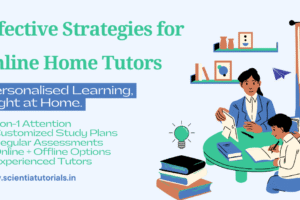Unlocking Potential: Teaching Tips for Home Tutors on How to Use Flashcards and Memory Aids in Home Tutoring
Introduction
In the realm of education, the ability to remember information is crucial for academic success. For many students, retaining facts, vocabulary, formulas, and concepts can be a significant challenge. Home tutors play a vital role in addressing these challenges, and one effective method to enhance memory retention is through the use of flashcards and memory aids. This article delves into the benefits of using flashcards, offers practical tips for their effective implementation, and explores various memory aids to support home tutoring.
Understanding Flashcards and Memory Aids
What Are Flashcards?
Flashcards are simple yet powerful learning tools that consist of a card with a question or prompt on one side and the corresponding answer on the other. They can be used for various subjects, including language learning, mathematics, science, and history. Flashcards facilitate active recall, which is a proven method for enhancing memory retention.
What Are Memory Aids?
Memory aids encompass a broader range of tools and techniques designed to help learners improve their recall and retention of information. These can include mnemonic devices, visual imagery, acronyms, and organizational tools like mind maps and charts.
Benefits of Using Flashcards and Memory Aids
- Enhanced Retention: Flashcards promote active engagement with the material, leading to improved retention rates compared to passive studying methods.
- Immediate Feedback: Flashcards provide instant feedback, allowing students to assess their knowledge and identify areas that require further study.
- Customizable Learning: Tutors can tailor flashcards and memory aids to suit individual student needs, preferences, and learning styles.
- Portability: Flashcards are easy to carry and can be used in various settings, making them a versatile study tool for students.
- Engagement: Using flashcards and memory aids can make learning more interactive and enjoyable, increasing student motivation.
Creating Effective Flashcards
1. Keep It Simple
- Limit each flashcard to one concept or idea. This helps students focus on one piece of information at a time, making it easier to remember.
2. Use Clear and Concise Language
- Use simple language and avoid complex explanations. The goal is to convey the information clearly and quickly.
3. Incorporate Visuals
- Add images, diagrams, or color coding to flashcards to enhance visual learning. Visual elements can aid memory retention and make the learning experience more engaging.
4. Make It Interactive
- Encourage students to create their own flashcards. This process engages them in their learning and allows them to personalize their study materials.
5. Organize by Category
- Group flashcards by subject or topic to help students make connections and see relationships between concepts. This organizational strategy can enhance understanding.
Using Flashcards Effectively in Home Tutoring
1. Start with a Review
- Begin each session by reviewing previously learned flashcards. This reinforces memory and helps students transition into new material.
2. Use Spaced Repetition
- Implement spaced repetition by revisiting flashcards at increasing intervals. This technique helps solidify information in long-term memory.
3. Play Games with Flashcards
- Turn flashcard review into a game to keep students engaged. For example, you can create a timed challenge or use flashcards to play “memory match.”
4. Encourage Peer Teaching
- Pair students and have them quiz each other using flashcards. Teaching others is a powerful way for students to reinforce their own understanding.
5. Incorporate Technology
- Use digital flashcard applications like Anki or Quizlet to create interactive and versatile flashcards. These platforms often include additional features like quizzes and tracking progress.
Exploring Memory Aids
In addition to flashcards, there are several memory aids that tutors can introduce to enhance learning:
1. Mnemonic Devices
Mnemonic devices are memory aids that use patterns, phrases, or acronyms to help students remember information. For example, the acronym “HOMES” can be used to remember the Great Lakes: Huron, Ontario, Michigan, Erie, and Superior.
2. Visual Imagery
Encourage students to create mental images associated with the information they need to remember. This technique can make abstract concepts more concrete and memorable.
3. Chunking
Chunking involves breaking down large amounts of information into smaller, manageable units. For example, instead of memorizing a long sequence of numbers, students can group them into smaller sets.
4. Mind Maps
Mind maps are visual representations of information that show relationships between concepts. They can help students organize their thoughts and see connections between different ideas.
5. Rhymes and Songs
Turning information into rhymes or songs can enhance memory retention, especially for younger students. This creative approach makes learning enjoyable and memorable.
Practical Tips for Home Tutors
To effectively integrate flashcards and memory aids into home tutoring sessions, consider the following tips:
1. Assess Learning Styles
- Understand your student’s learning style (visual, auditory, kinesthetic) to tailor your approach. For example, a visual learner may benefit more from flashcards with images, while an auditory learner may prefer verbal explanations.
2. Set Specific Goals
- Establish clear learning objectives for each session. For instance, if the goal is to memorize vocabulary for a language, focus on a specific number of flashcards.
3. Be Patient and Supportive
- Encourage students to practice regularly and remind them that learning takes time. Celebrate their progress, no matter how small, to boost their confidence.
4. Provide Regular Feedback
- Offer constructive feedback on their performance with flashcards and memory aids. Highlight areas of strength and suggest ways to improve.
5. Encourage Consistent Practice
- Encourage students to practice with flashcards and memory aids outside of tutoring sessions. Regular review is essential for effective memory retention.
Addressing Common Challenges
While flashcards and memory aids can be highly effective, students may encounter challenges. Here are some common obstacles and how to address them:
1. Lack of Motivation
- If students seem disinterested, find ways to make flashcard study sessions more enjoyable. Introduce games, challenges, or rewards to increase motivation.
2. Overwhelmed by Content
- If the amount of material feels overwhelming, help students prioritize which concepts to focus on. Break the study material into smaller, manageable chunks.
3. Forgetting Information
- If students struggle to remember information, encourage them to use mnemonic devices or visualization techniques to enhance recall.
4. Difficulty with Application
- If students can recall information but struggle with application, engage them in discussions that require them to apply what they’ve learned to real-life scenarios.
Creating a Structured Lesson Plan
To ensure effective use of flashcards and memory aids, consider structuring your lesson plans as follows:
Lesson Plan Example
Objective: Enhance vocabulary retention for language arts.
- Introduction (5 minutes)
- Briefly introduce the day’s topic and objectives.
- Flashcard Creation (15 minutes)
- Guide students in creating personalized flashcards for new vocabulary words, encouraging visuals and examples.
- Active Review (10 minutes)
- Use the flashcards for a quick review session, prompting students to recall meanings and use words in sentences.
- Memory Aid Introduction (10 minutes)
- Teach a mnemonic device or visual technique for remembering vocabulary.
- Application Exercise (15 minutes)
- Engage students in a writing exercise where they must use the new vocabulary in context.
- Feedback and Reflection (5 minutes)
- Provide feedback on the writing exercise and discuss which memory aids were most helpful.
Conclusion
Using flashcards and memory aids in home tutoring can significantly enhance students’ learning experiences. By leveraging these tools, home tutors can help students improve their retention, engagement, and overall academic success.
As you incorporate these strategies into your tutoring sessions, remember to remain flexible and responsive to individual student needs. Through consistent practice, creativity, and encouragement, you can unlock your students’ full potential and foster a love for learning that lasts a lifetime. Embrace the power of flashcards and memory aids as invaluable resources in your teaching toolkit, and watch your students thrive academically.



